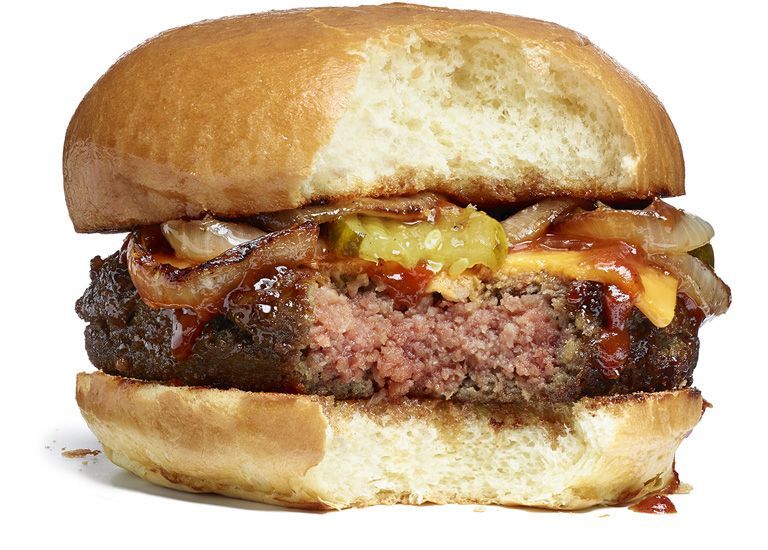Professor Mark Post has a competitor in the search for a change in the way we produce and eat meat. Stanford biochemist Patrick Brown has come up with an innovative alternative to make environmentally friendly beef burgers.
He developed the burger pictured above out of nothing but plant ingredients: a meatless burger, that looks and tastes like meat. The secret ingredient? A chemical compound called heme.
"Heme is basically 99 percent of the secret to meat flavor. Heme is the molecule that makes meat taste like meat. It's the reason meat tastes like nothing else. It's the reason why red meat, which has more heme, tastes meatier to people than white meat" Brown explains.
Heme can be extracted from a protein, leghemoglobin, found in leguminous plants. As the name suggests, leghemoglobin is similar to hemoglobin, the red pigment in blood. But heme is not just useful in the aesthetics of the burger, it also contains iron which, when exposed to oxygen, turns red and creates the meat flavor.
According to Wall Street Journal, Brown’s burger tastes like real meat and has a similar texture, the reporter described it as a flavor cross between beef and turkey, leaving a blood-like moisture on the plate.
That medium-rare delight is now being manufactured by Brown’s company Impossible Foods, established with the aim of replicating meats, eggs, cheese and other animal-based foods with plant matter.
Brown’s burger only costs $20 to make, which is significantly cheaper than Post’s in vitro meat burger.
A new era of alternative meat, potentially indistinguishable from the real thing, made either of synthesized animal tissue or derived from plant material, has already started. Post or Brown, who will win the race to produce a viable large-scale replacement for the food that has been part of human diet for 200.000 years?
Source CNet

Share your thoughts and join the technology debate!
Be the first to comment